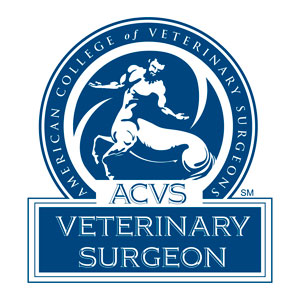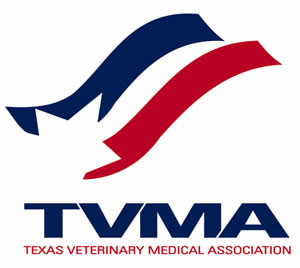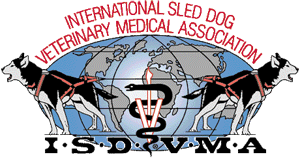Outcomes for total joint replacement in dogs and cats
Rapid recovery and high performance are expected – not just hoped for. Patient function, quality of life, and return to intended purpose in life ultimately define the animal owners’ satisfaction. Joint replacements are a suitable option for joint pain. Intervention in young patients is feasible, and is more common because technology has provided us with implants with a longer "life expectancy" than that of our patients.
Canine joint replacement technology and surgeon expertise have advanced greatly over the last 20 years. At the same time, management of preoperative, perioperative, postoperative, and chronic pain have received considerable attention. Only a few relatively small companies worldwide supply the technology for joint replacement surgery and a relatively low number of surgeons have the expertise and high volume joint replacement practices to consistently perform the procedures with a high degree of repetition and proficiency.
A few options, such as physical therapy and medical management, are available for dogs with chronic osteoarthritis and presumable chronic joint pain. Medical management of osteoarthritis will always be the first treatment option. In humans, medical management does not completely and indefinitely relieve pain once the progression of disease reaches a critical point as evidenced by the fact that approximately 1.3 million joint replacement surgeries are performed annually in the USA. Some other less desirable surgery options exist for our canine and feline population. A femoral head ostectomy for the hip is an option that was described in the scientific literature about 50 years ago, but no conclusive studies with objective evidence, such as recent reliable force plate gait analysis data, could be found that document return to “normal” function as is available following total hip replacement surgery.
Animals should be able to return to high levels of activity following hip replacement surgery. Even older animals with chronic arthritis or other disease processes are expected to have a rapid recovery and to regain pain free full function exceeding levels previously never considered possible. In most instances, expectations of outcomes for dogs appear to be higher than what human patients expect for themselves if they undergo the same procedure. In one human study, only 16% of the patients reported participating in manual labor or sports deemed “not recommended” by the surgeon. In another study, clients’ expectations of surgical results were lower than the surgeons’ expectations. Some human patients undergoing hip replacement expressed concerns about the ability to continue with certain recreational and sporting activities, or to begin new activities after the procedure. Following THR, 5 sports showed significant change in patients’ participation from pre to post-operation. Participation increased in walking exercise (16.8%) (P < 0.0001) and aqua aerobics (P=0.002). Participation in three sports decreased significantly: golf (P=0.005), tennis (P=0.01), and jogging (P=0.01). The total number of patients exercising following joint replacement increased postoperatively, but the total amount of vigorous activity decreased. This kind of decrease in vigorous activity levels allowed is not acceptable for dogs, and it generally is not necessary after full rehabilitation.
It is variable to what extent and how quickly dogs can resume vigorous or strenuous activity following joint replacement even though anecdotal evidence demonstrates safe return to an extremely high level of activity including weekend warriors, hunting, performance in the show ring, field trials, return to work as law enforcement dogs, endurance activity running with clients many miles per week, and return to duty as service dogs. Expectations should be realistic and not expect dogs to compete at elite levels of activity, such as competing in events like The Iditarod Sled Dog Race, or to accompany their human owners in triathlon competition. Rarely do human patients’ expect to progress to function and activity levels that were not achievable prior to the onset of their osteoarthritis. The contrary is true with canine patients; owners often ask if their young dog undergoing hip replacement surgery will be able to carry out recreational or work activities that were never achievable before surgery.
A paradigm shift is in order in recommending hip replacement surgery from “wait until it is absolutely necessary because nothing else works any longer” to “perform hip replacement surgery sooner rather than later”. Months and even years of oral anti-inflammatory medication, years of joint health support product injections, acupuncture, holistic medicine, and chiropractic have been used in some dogs. Hip replacement implants are expected to “outlive” the patient so delaying surgery over concerns about implant wear is not justified.
The ideal joint prosthesis would mimic the anatomy, kinetics, and kinematics of a normal contralateral joint. Implant design, surgical technique, and surgeon judgment affect proper restoration of the anatomical integrity. Incomplete restoration creates the possibility of biomechanical dysfunction, subtle functional deficits, accelerated implant wear, and ultimately the potential for complications or joint replacement failure. This is particularly true in the patient that is expected to return to strenuous, high impact, and/or endurance activity.
The patient’s aftercare and rehabilitation can be critical in defining ultimate performance outcomes after surgery. Rehabilitation should be part of the preoperative conversation and preparation, and rehabilitation should continue throughout patient recovery. A realistic prognosis must be provided preoperatively. Risks and complications should clearly be discussed and be well understood by the client. All of these factors take a considerable amount of effective and consistent communication between the doctor/hospital staff and the client.
What is necessary to allow animals with joint replacements to lead an active life?
A. Perform surgery sooner rather than later before muscle and bone atrophy is present.
B. Secure fixation of joint prosthesis implants is mandatory for long-term success of active patients. Cemented and cementless fixation methods are used. Cemented fixation of hip prosthesis implants has been successful for well over 20 years but is technique sensitive. Cementless fixation has gained great popularity since 2003. Bone ingrowth into the porous implant surface provides the ultimate long-term fixation with one less variable of concern during the implant life – the bone cement. Cementless fixation is also technique sensitive with greater precision demands during surgery. Implant loosening is one cause of joint replacement revision or removal. Loosening may be of mechanical or biological origin.
C. Use implants with superior wear characteristics. The average human patient exerts 1.426 million loading cycles on each hip per year and polyethylene wear is multi-factorial including time, level of activity, patient weight, femoral head surface finish, and polyethylene deterioration. Wear rates gradually decreased with time and stabilize. Wear rates should be evaluated in dogs to better understand such issues as the effect of 4-legged walking in animals versus 2-legged walking in humans on wear rates, and the effect differences in body weight has on smaller implant surfaces.
D. Ensure accurate anatomical positioning. Millimeters are critical in hip and knee replacement surgery in people. Millimeters may be even more important in dogs with shorter limbs.
E. Rehabilitation should be customized for each patient based on client interview, therapist evaluation of the patient, surgical technique, surgeon expertise and preferences, and activity goals for the patient to reach. It is advisable to discuss rehabilitation techniques available to assist patient recovery prior to surgery.
F. Perform regular radiographic follow up examinations to monitor implant systems and to provide the surgeon with information for understanding and self-assessment of skills.
G. Surgeons have excellent existing implant designs and instrumentation. Surgeons spend a great deal of time perfecting through repetition of high numbers of joint replacement procedures. Maintaining proficiency requires performing the procedure at least once a week.
In conclusion, high performance by the surgeon and the hospital staff is necessary to produce high performance from our patients.
References
1. Dahm DL, Barnes SA, Harrington JR, Sayeed SA, Berry DJ. Patient-reported activity level after total knee arthroplasty. J Arthroplasty. 2008 Apr;23(3):401-7
2. Moran M, Khan A, Sochart DH, Andrew G: Expect the best, prepare for the worst: surgeon and patient expectation of the outcome of primary total hp and knee replacement. Ann R Coll Surgery Engl. 2003 May;85(3):204-6
3. Chatterji U, Ashworth MJ, Lewis PL, Dobson PJ: Effect of total hip arthroplasty on recreational and sporting activity. ANZ J Surg. 2004 Jun;74(6):446-9
4. Kuster MS: Exercise recommendations after total joint replacement: a review of the current literature and proposal of scientifically based guidelines. Sports Med. 2002;32(7):433-45
5. Markel D C, Kester M: High Performance: What is it and why we need it, Seminars in Arthroplasty Vol 17:2, p 31, June 2006
6. Goldsmith AA, Dowson D, Wroblewski BM, Siney PD, Fleming PA, Lane JM: The effect of activity levels of total hip arthroplasty patients on socket penetration. J Arthroplasty. 2001 Aug;16(5):620-7
7. Dai X, Omori H, Okumura Y, Ando M, Oki H, Hashimoto N, Baba H: Serial measurement of polyethylene wear of well-fixed cementless metal-backed acetabular component in total hip arthroplasty: an over 10 year follow-up study. Artif Organs. 2000 Sep;24(9):746-51
8. Aldinger PR, Sabo D, Pritsch M, Thomsen M, Mau H, Ewerbeck V, Breusch SJ: Pattern of periprosthetic bone remodeling around stable uncemented tapered hip stems: a prospective 84-month follow-up study and a median 156-month cross-sectional study with DXA. Calcif Tissue Int. 2003 Aug;73(2):115-21
9. Pitto RP, Schramm M, Hohmann D, Schmidt R: Clinical outcome and quantitative evaluation of periprosthetic bone-remodeling of an uncemented femoral component with taper design. A prospective study. Chir Organi Mov. 2001 Apr-Jun;86(2):87-97
10. Herzwurm PJ, Simpson SL, Duffin S, Oswald SG, Ebert FR: Thigh pain and total hip arthroplasty: scintigraphy with 2.5-year followup. Clin Orthop Relat Res. 1997 Mar;(336):156-161
11. Whiteside LA: The effect of stem fit on bone hypertrophy and pain relief in cementless total hip arthroplasty. Clin Orthop Relat Res. 1989 Oct;(247):138-47












